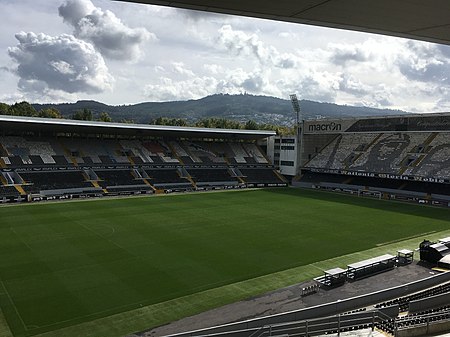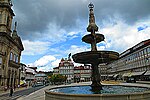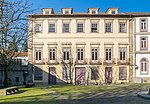Estádio D. Afonso Henriques

The Estádio D. Afonso Henriques (English: D. Afonso Henriques Stadium) is a football stadium in the city of Guimarães, Portugal. The stadium is home of Guimarães's most successful team, Vitória de Guimarães, presently competing in the top-flight Portuguese Liga. The stadium was built in 1965 and was renovated and expanded in 2003 for the UEFA Euro 2004 tournament by architect Eduardo Guimarães. Estádio D. Afonso Henriques has a capacity of 30,029 and it is named after the first King of Portugal—and also a Guimarães native—Dom Afonso Henriques. It was formerly known as Estádio Municipal de Guimarães, and before that as the Estádio D. Afonso Henriques (1965). During Euro 2004, the stadium hosted two of the tournament's matches.
Excerpt from the Wikipedia article Estádio D. Afonso Henriques (License: CC BY-SA 3.0, Authors, Images).Estádio D. Afonso Henriques
Rua Doutor José Pinto Rodrigues, Guimarães
Geographical coordinates (GPS) Address External links Nearby Places Show on map
Geographical coordinates (GPS)
| Latitude | Longitude |
|---|---|
| N 41.445833333333 ° | E -8.3011111111111 ° |
Address
Estádio Dom Afonso Henriques
Rua Doutor José Pinto Rodrigues
4810-420 Guimarães (Oliveira, São Paio e São Sebastião)
Portugal
Open on Google Maps










